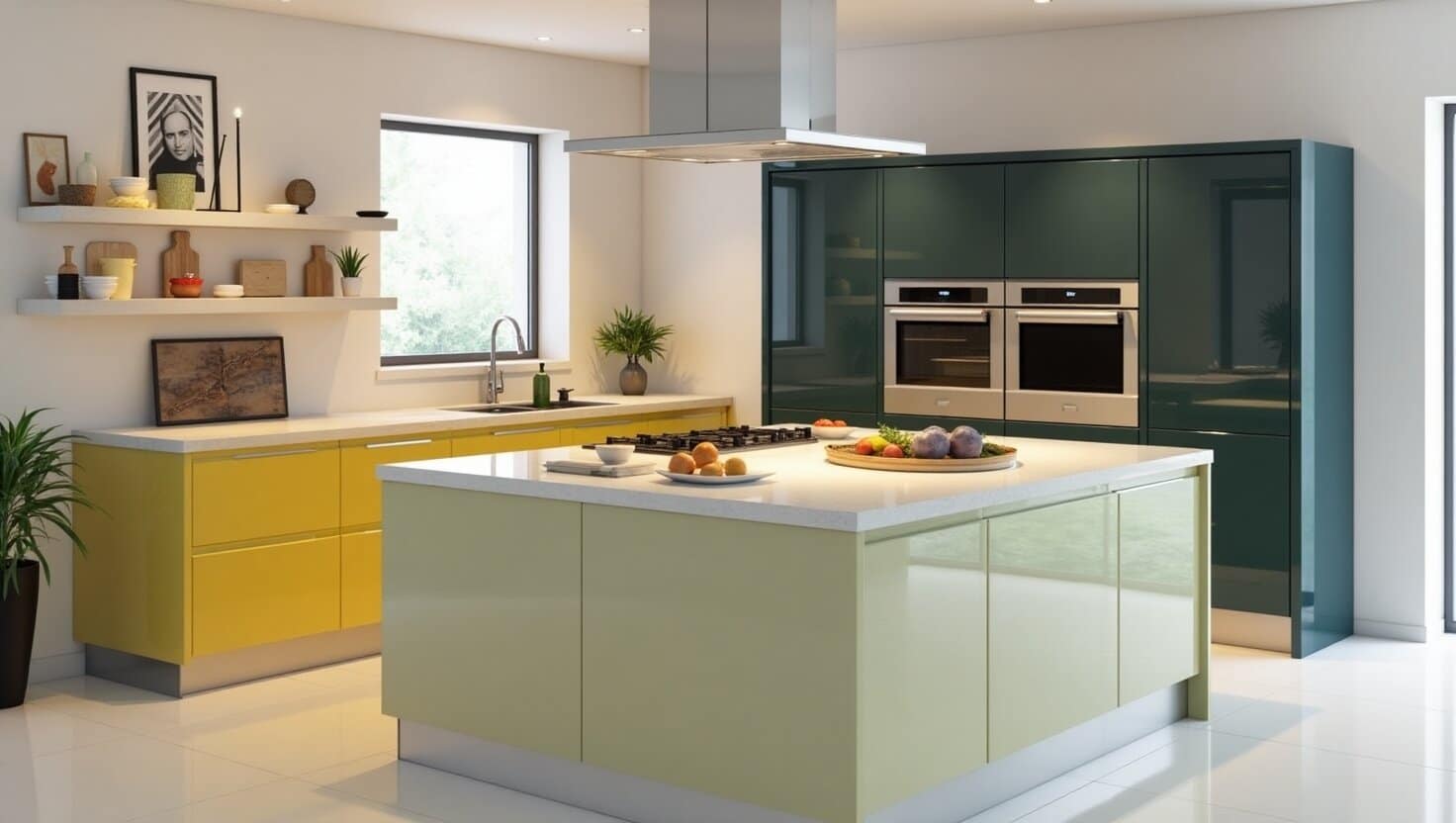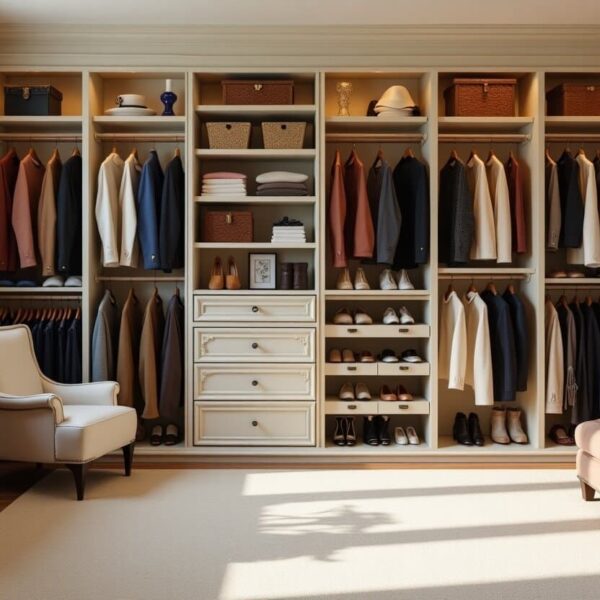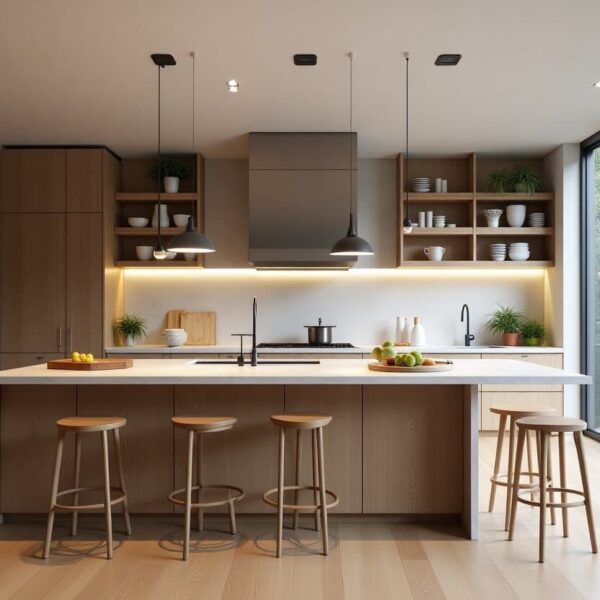When you’re choosing custom kitchen cabinets—especially if you’re buying from overseas or from China’s huge market—picking a color is just part of the story. The finish you choose can really change how that color looks once it’s in your kitchen.
This guide is here to help you understand how different finishes affect the way colors show up and the overall feel of your kitchen. Whether you’re remodeling or working with a China kitchen cabinet supplier, getting the finish right can make a big difference in how your kitchen turns out.
Common Kitchen Cabinet Finishes & Their Color Impact
Let’s break down some popular kitchen cabinet finishes and see how they change the way colors look in your kitchen.
Paint Finishes
Paint is a classic choice with tons of colors available. The gloss level—like matte, satin, or high-gloss—really affects how light bounces off, making colors seem either soft or bright. UV coating uses special curing to create a super smooth, durable, and eco-friendly finish that makes colors pop with a shiny look. Piano lacquer gives a mirror-like shine that makes colors look bold and rich, but be careful—temperature and humidity changes can cause cracks.
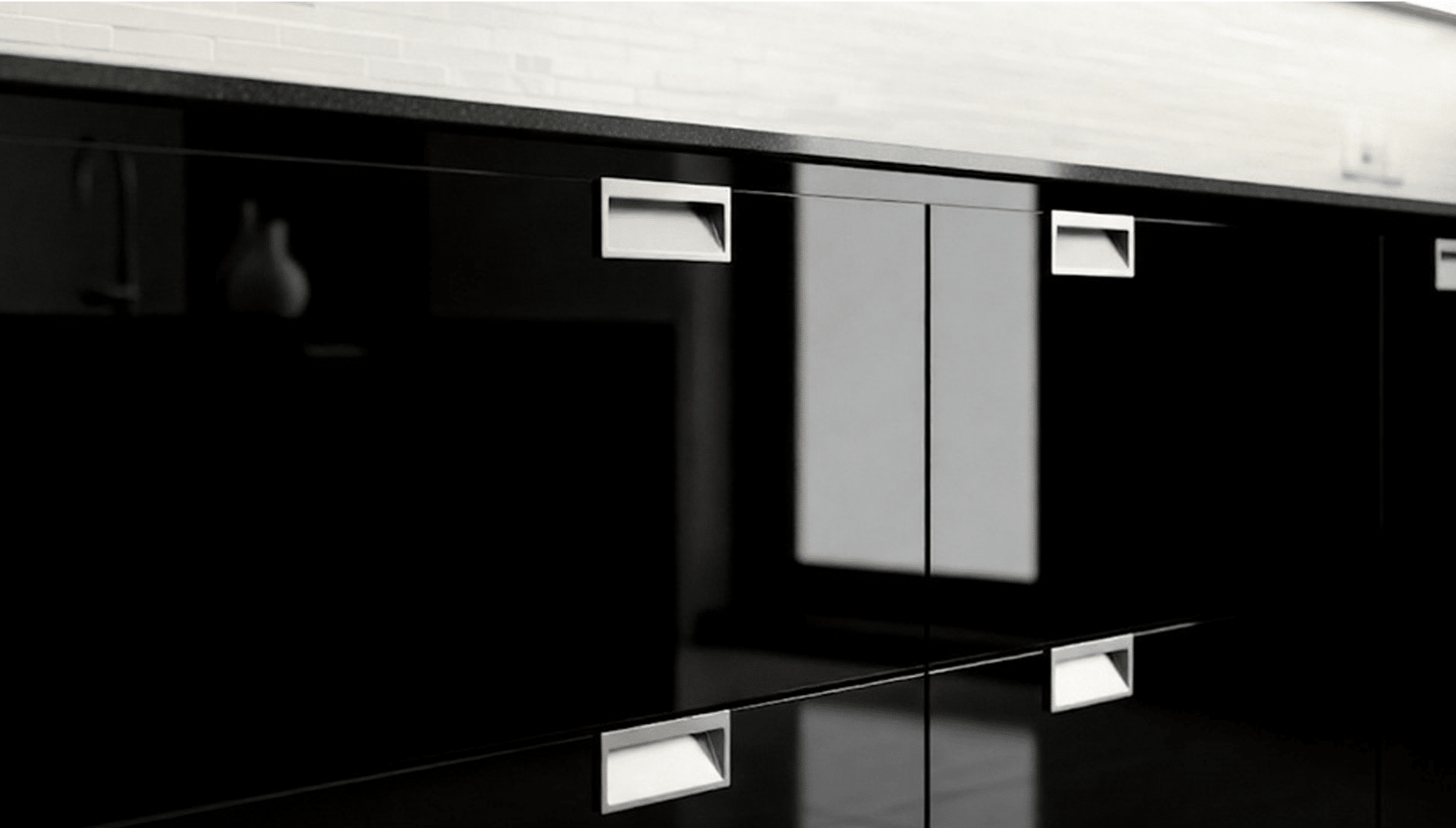
Film Finishes
PVC vacuum forming means covering MDF with a PVC film that can be shaped with patterns, great for fancy door designs. It’s water-resistant and often mimics wood or stone. PET film, made from food-safe plastic, can feel soft or glossy and resists fingerprints—soft versions make colors look warm and smooth, glossy ones make them bright and clean.
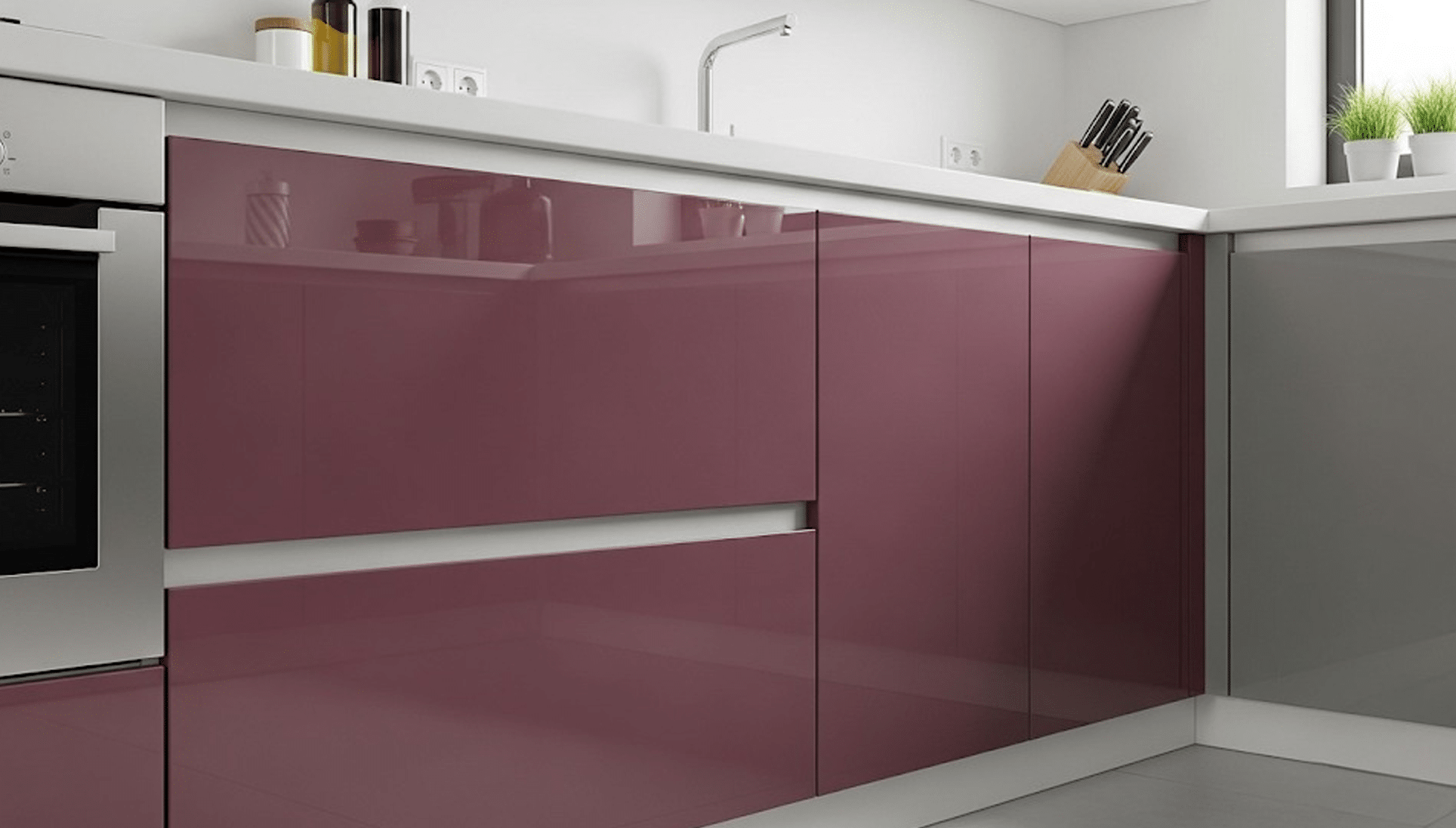
Wood Grain & Natural Finishes
Melamine laminate is paper pressed onto particleboard, making a tough, heat-resistant surface that can mimic wood or stone well, with consistent color. Wood veneer uses real wood slices, showing natural grain and color for depth and character—even if stained, the texture comes through.
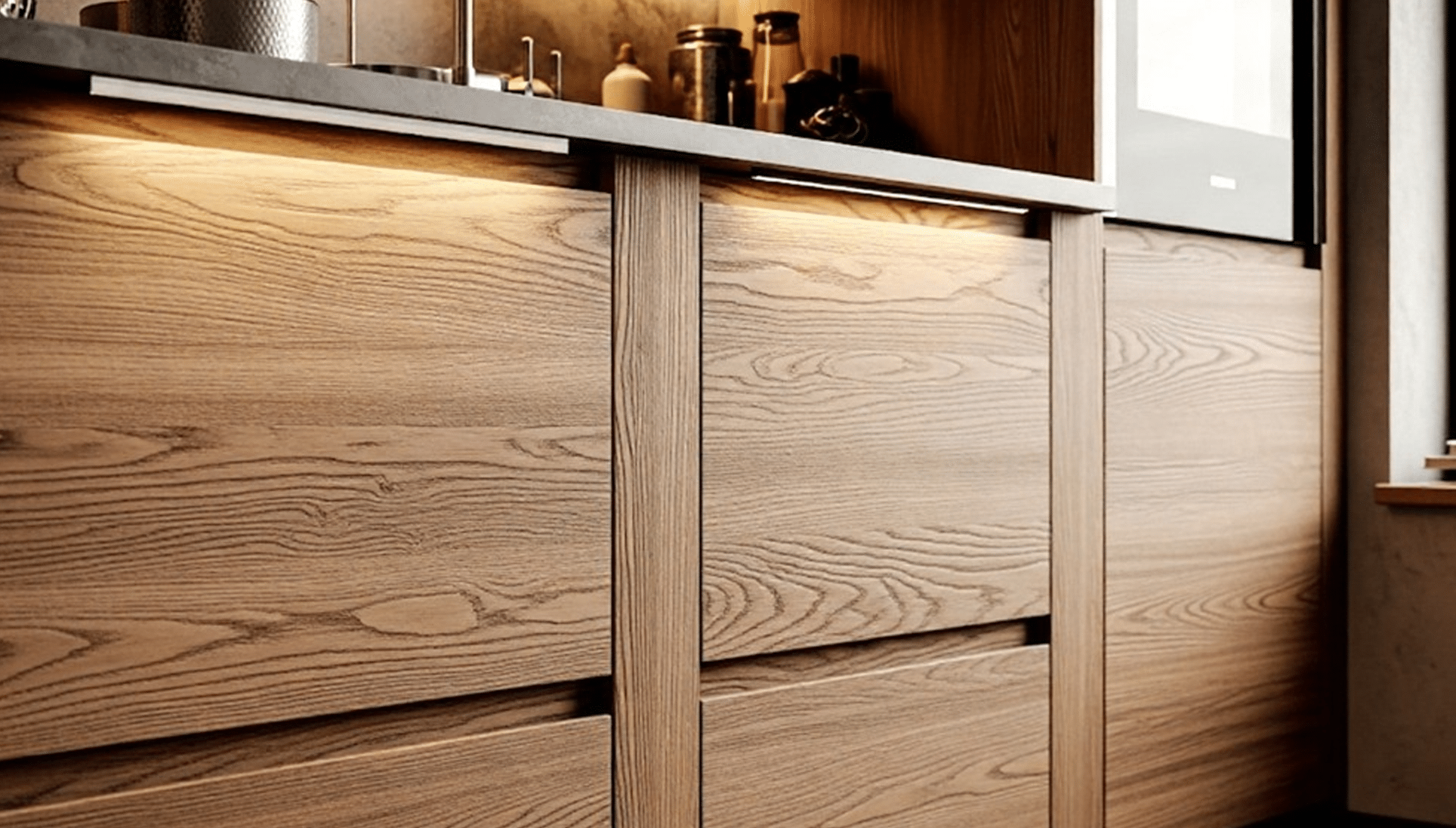
Fire-resistant & Wear-resistant Finishes
Laminate is a fire-rated, scratch-resistant finish, usually matte or low-gloss, giving colors a solid, steady look—perfect for busy kitchens.
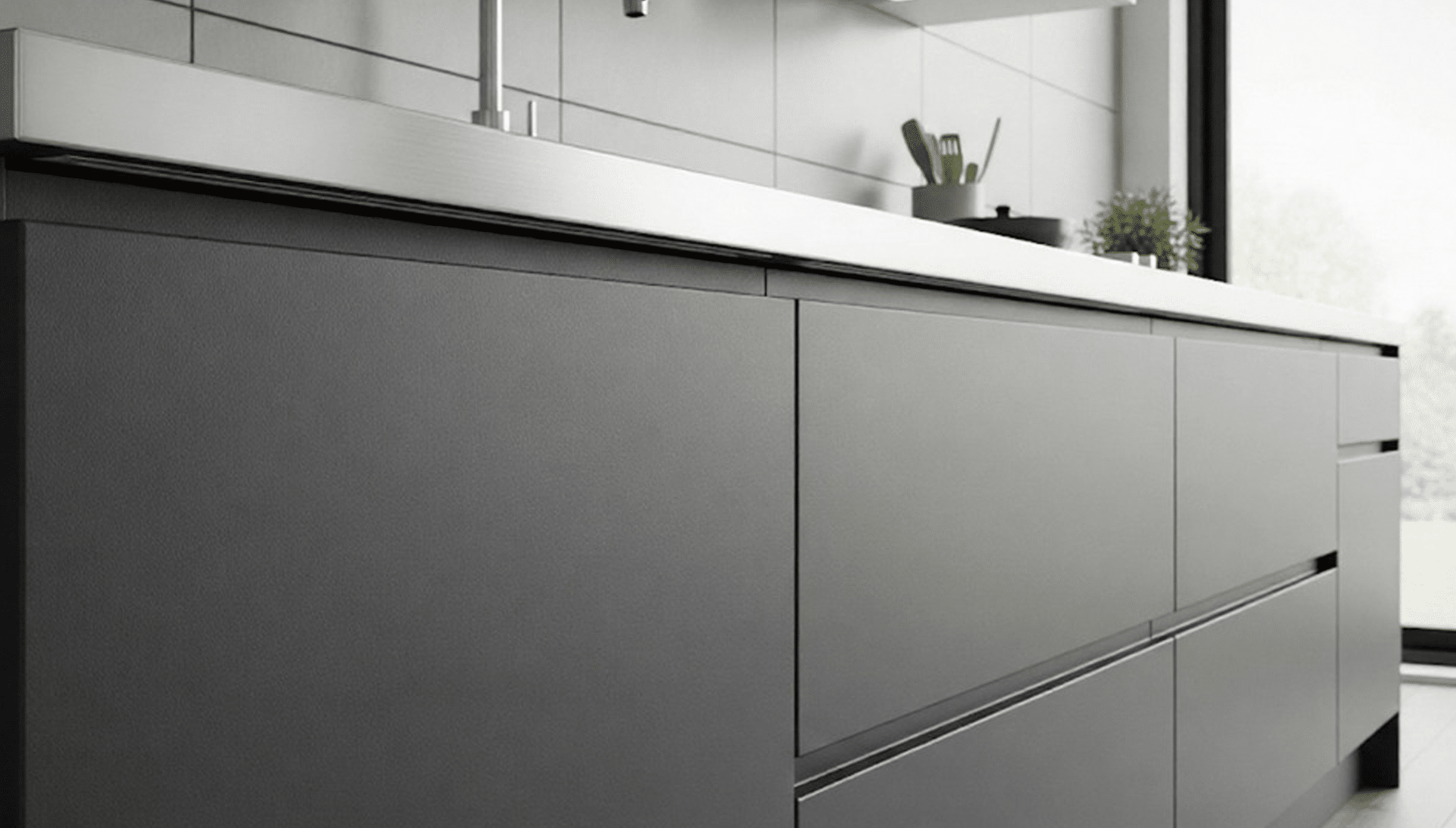
Metal & Special Finishes
Brushed or mirror stainless steel uses 304 steel; brushed hides fingerprints and looks matte-metallic, mirror reflects light and opens up the space. It suits humid places like the Middle East. PVD coatings add colorful, tough layers to metal that resist scratches and bacteria—great for high-end homes in places like Singapore or Australia.
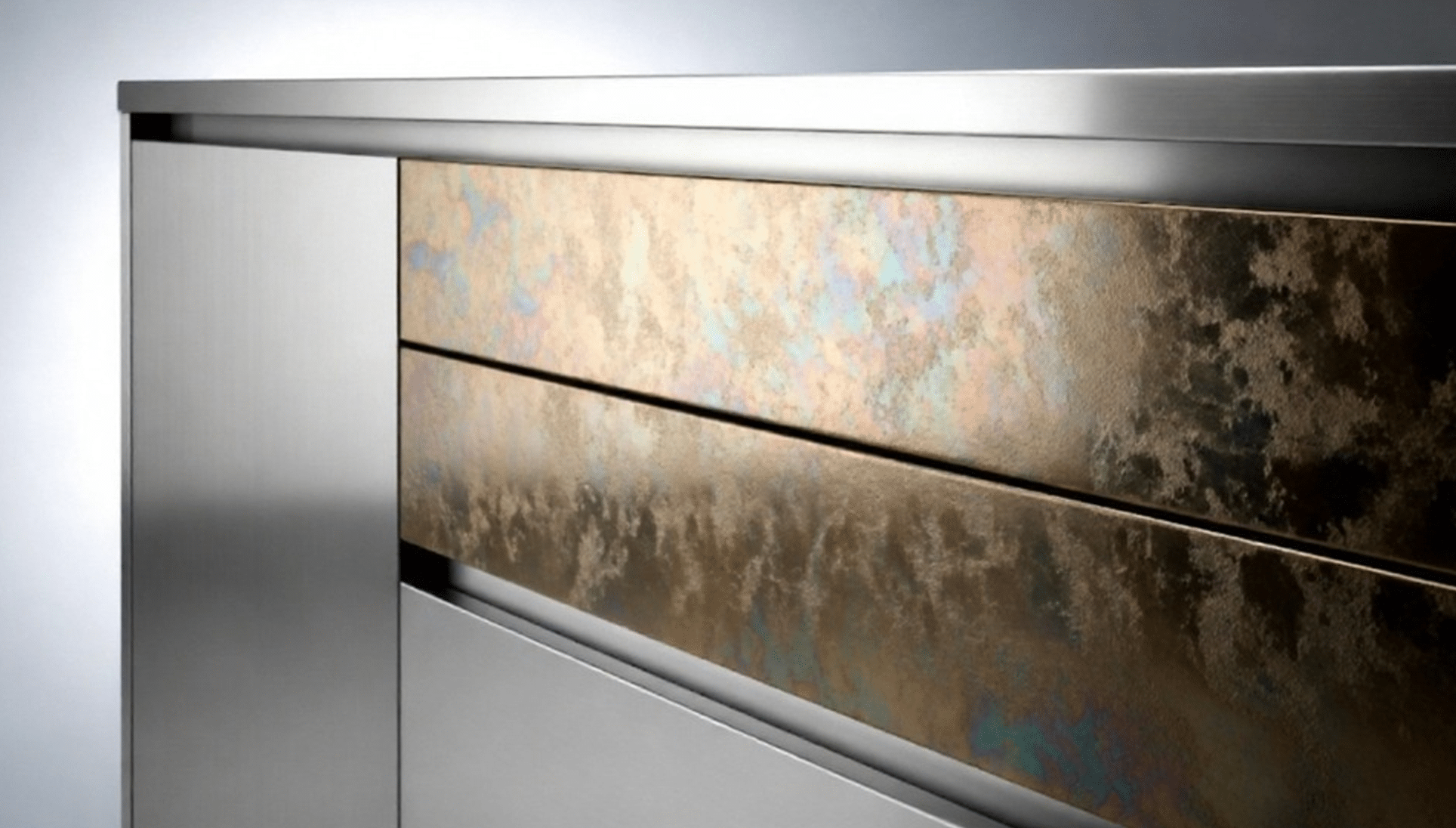
New Finish Tech
Antibacterial powder coatings are solvent-free and thick, mostly on aluminum cabinets, with eco-friendly colors in matte or satin—popular in Nordic eco-friendly homes. Glass-ceramic finishes combine wood with a glass surface that’s heat and wear-resistant, giving colors a glossy, glassy look—ideal for very clean kitchens.
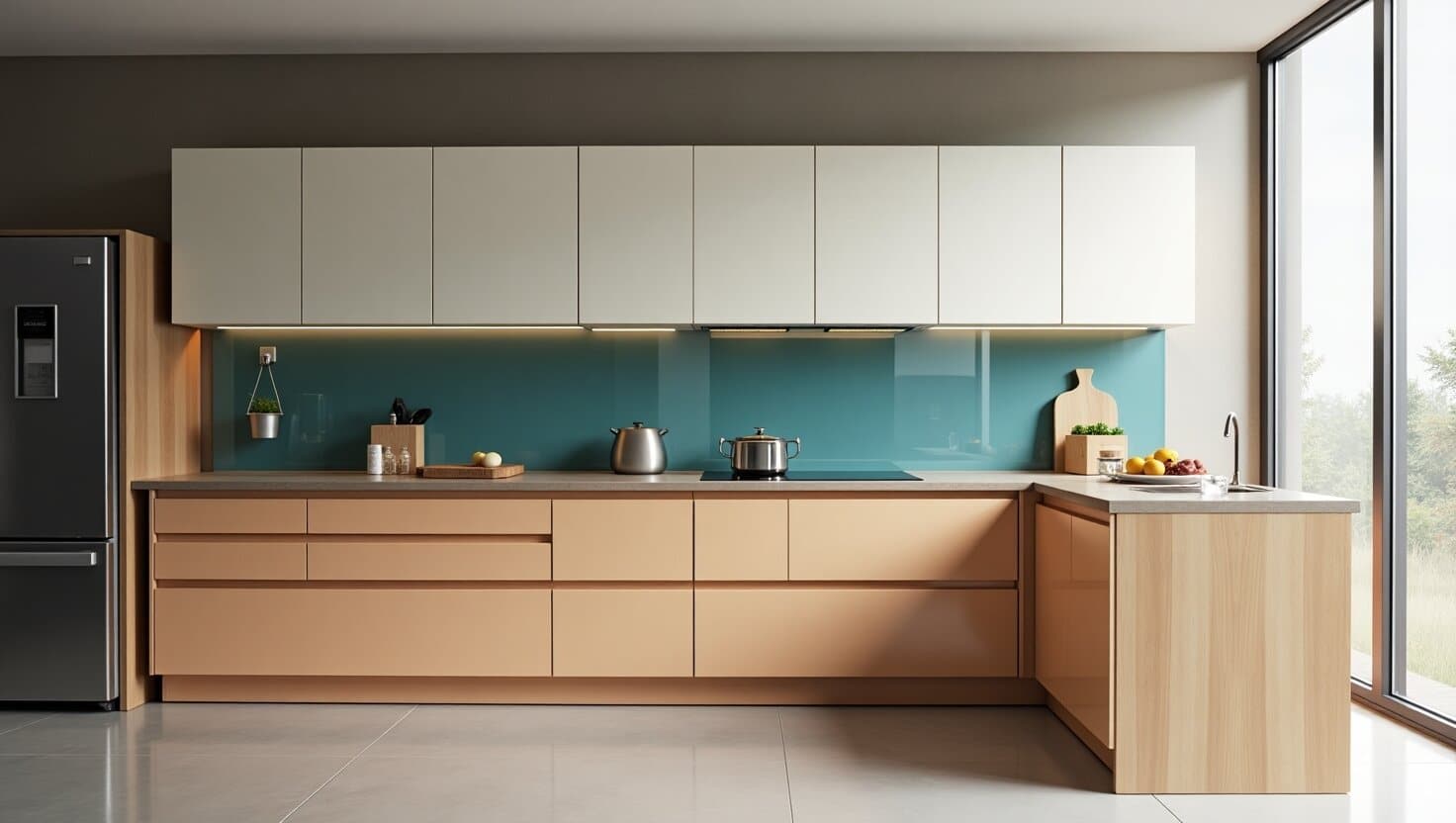
How Finishes Shape Color Perception
When picking kitchen cabinet colors, most of us just stare at the paint swatch or the wood itself, but what many don’t realize is just how much the finish—like super glossy, a muted matte, a subtle satin, or something with texture — can totally change how that color actually looks in your kitchen. It’s not merely a protective layer; it genuinely transforms how you experience the color, its depth, and even the way light plays across your kitchen.
Picture a white cabinet, for example. A glossy white looks super crisp and modern, bouncing light around to instantly make a small kitchen feel bigger and brighter. But slap a matte finish on that same white? Suddenly, it’s softer, gentler on the eyes, creating a more laid-back vibe, maybe even a cozy, rustic feel. Matte surfaces tend to drink up light rather than bouncing it back, so colors usually come across a tad deeper and less in-your-face than their glossy siblings.
Now, when you throw textured or naturally grained surfaces into the mix, things get even more interesting. Take a stained oak cabinet, for instance; the natural grain will gently peek through, warming up the color and adding a lovely visual depth. Even if you use the same stain on different types of wood, the unique grain pattern, density, and texture can look surprisingly different, all thanks to the unique grain pattern and density. That’s why it’s super important to consider the wood itself and how it’s finished, working hand-in-hand.
And don’t even get me started on lighting – it’s a game-changer. A satin finish might catch just enough light to really pop in bright daylight. But come evening, when the lights are dim, that same surface can just fall flat. Since your kitchen’s lighting shifts constantly throughout the day, those cabinet colors will too. So, here’s the golden rule: grab those samples, bring them into the actual room where your cabinets will live, and check them out at different times – morning, noon, and night. You’ll get the real feel then.
At the end of the day, the surface finish isn’t just a minor detail; it’s the real boss when it comes to how your chosen color ultimately looks. That tiny swatch on a color card or a picture in a brochure? It might not quite translate to what you get once those cabinets are actually made and installed in your kitchen. So, make sure to really chat with your cabinet maker and insist on seeing samples of different finishes. That’s your best bet for making sure your installed cabinets are exactly what you’ve been dreaming of.
Have a project in mind? Send a message.
Get the catalog for free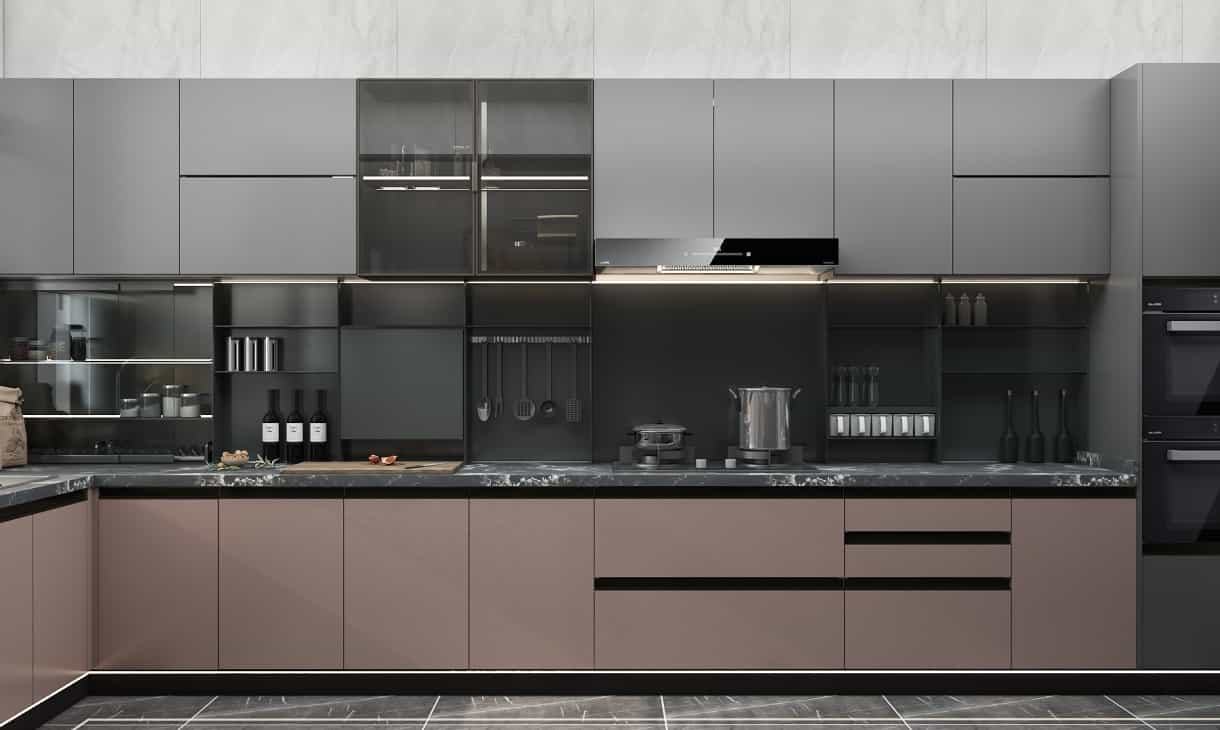
The Design Formula
Knowing about finishes is just the first step. If you want your kitchen cabinets to really look how you imagine, here’s a simple way to think about it:
How a cabinet color actually comes across depends mostly on the finish—like 60% of the effect. Then lighting plays a big role, about 30%. And lastly, what’s around the cabinets, maybe 10%.
Here’s why:
The finish matters most. Glossy finishes reflect light, so colors pop and feel brighter. Matte ones soak up light, making colors softer and sometimes a bit darker. Textures add character and can change how the color feels.
Lighting is huge. Daylight, bulbs, where the lights are placed—it all shifts how the color looks throughout the day. What seems warm and bright in the morning might look cooler or duller later on.
And the space itself—floors, walls, counters, the whole vibe—can change how much your cabinets stand out or blend in.
So if your cabinets don’t look exactly like you expected, it’s usually not just about the paint color. The finish, lighting, and the room all team up to shape the final look. Keeping an eye on all three helps you get closer to what you want.
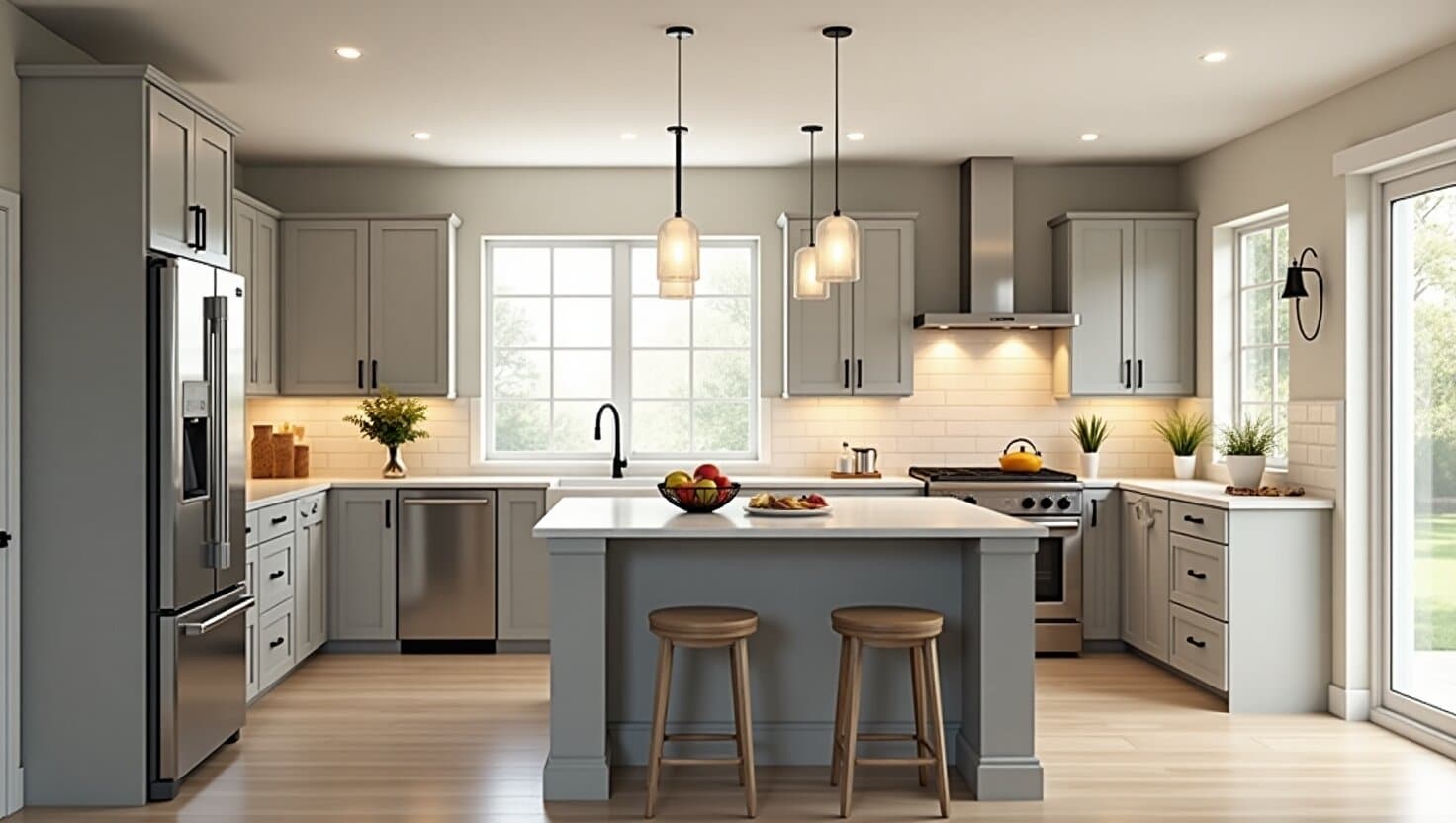
How to Choose the Best Kitchen Cabinet Finish
Budget Wisely
Match Your Design Style & Regional Needs
Assess Maintenance Needs
Consider Kitchen Lighting & Surrounding Elements
Request Samples
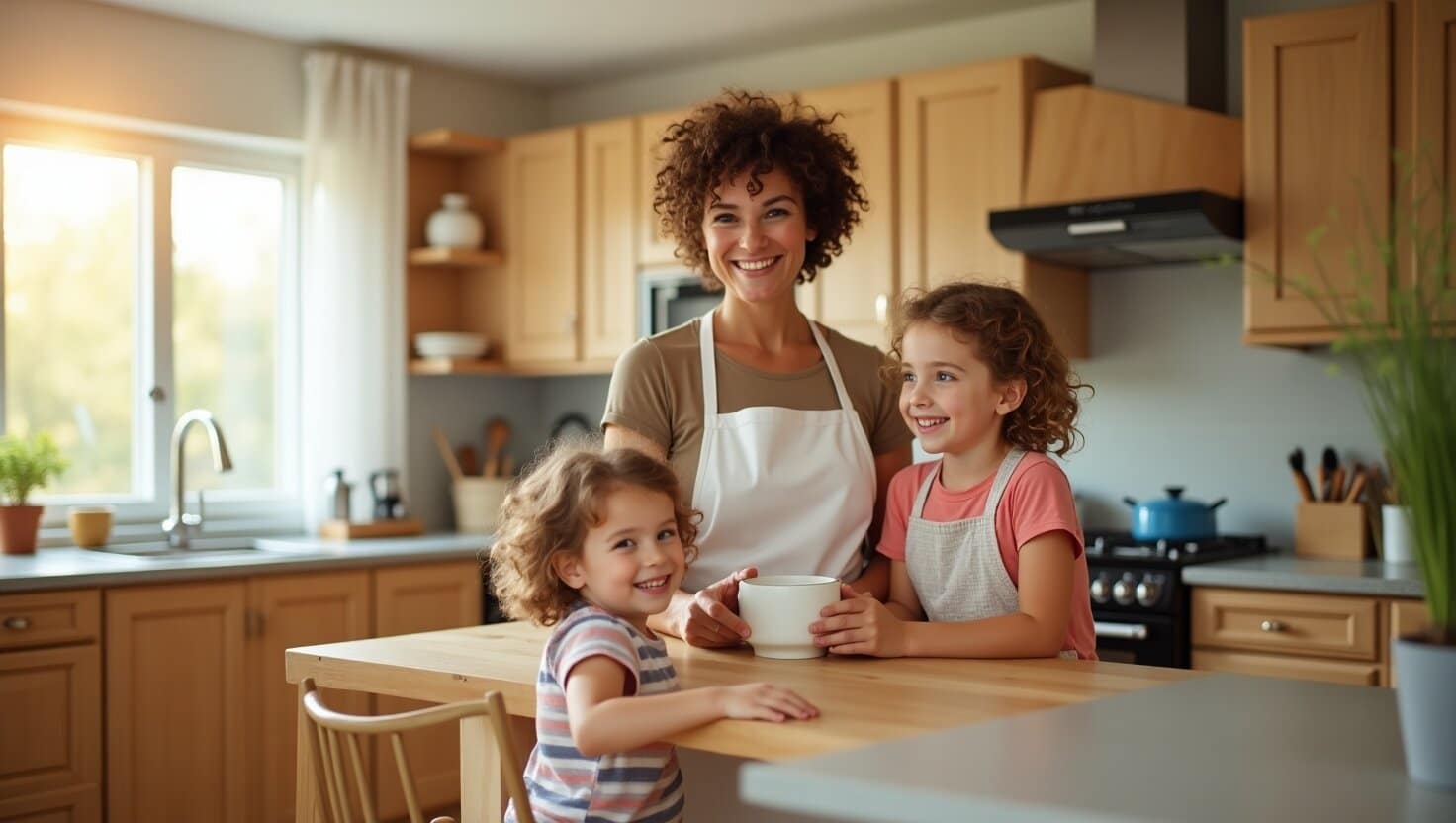
Your Partner for Custom Kitchen Cabinets from China
Contact NextHome Now!
We are here to help you with your business needs. We have a team of experts who are always eager to help you.

